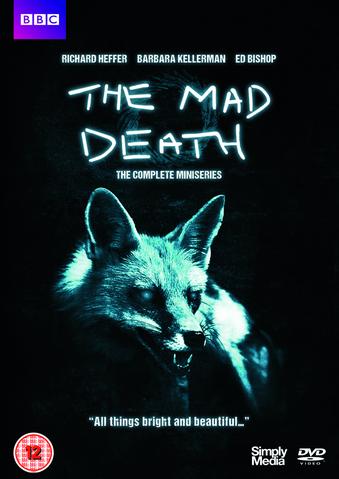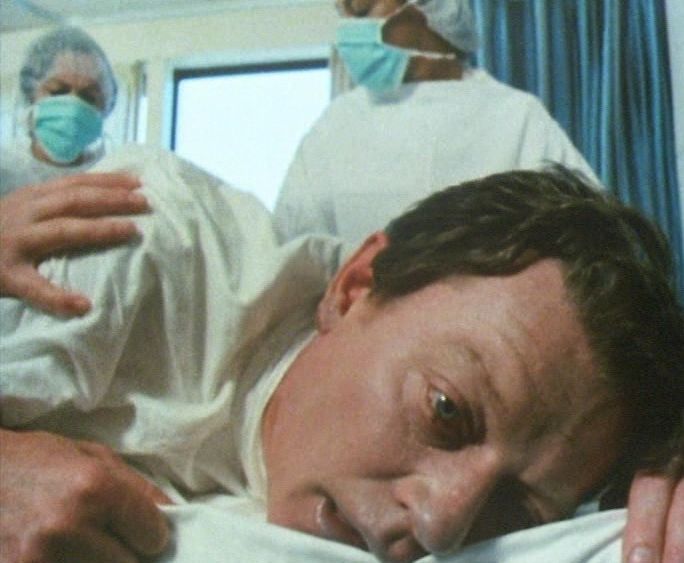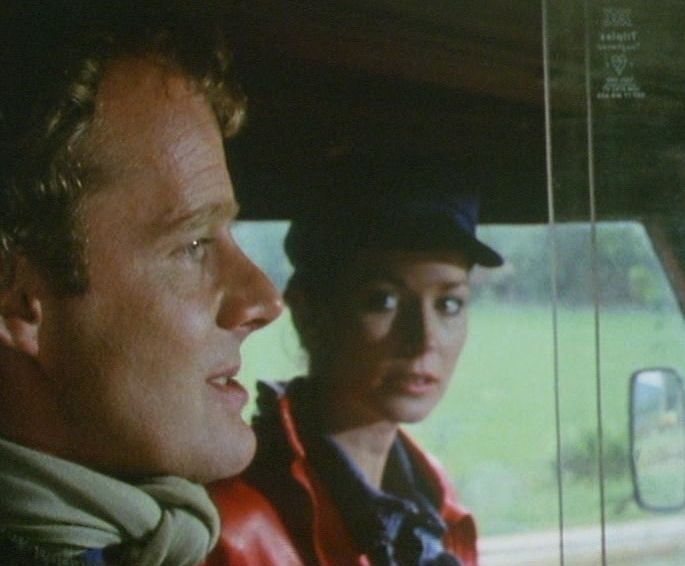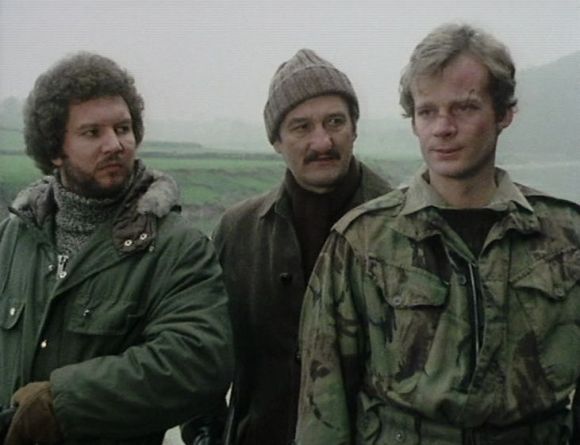
It always seemed that it could never happen here, but when a cat infected with rabies is smuggled into Britain it triggers a major crisis. Facing hostility from the public (angry that some of their pets have been impounded) the authorities struggle to stop the outbreak from spinning out of control ….
Tom Siegler’s (Ed Bishop) decision to befriend an apparently benign wolf he discovers at the side of the road has far-reaching consequences. By now the audience has already been primed to expect something awful to happen, although the tension is eked out for a few minutes longer (Tom, having cut his finger slicing a lemon, then goes over and pets the fox – although at this point there’s no reaction).
The boiling point isn’t far away though. Animal wrangling must have been an issue for the serial, as attempting to depict rabid beasts would require considerable co-operation from the animal actors (which no doubt couldn’t always be guaranteed). Director Robert Young keeps the tension bubbling along though, thanks to rapid cuts and close-ups, with the result that the action scenes feel viscerally real.
Young had cut his teeth on horror films (directing Vampire Circus for Hammer in 1971) before moving into television in the early eighties. Robin of Sherwood, Bergerac, Jeeves & Wooster and G.B.H. all benefitted from his presence. Possibly it was his work on The Mad Death which made him an ideal fit later for Robin of Sherwood, as both had – at times – a woozy, non-naturalistic feel.
This is first seen in The Mad Death after Tom, by now seriously ill after being bitten by the fox, is hospitalised following a car crash. The hospital should be a place of safety and security, but instead it’s a hallucinogenic nightmare for him. The mere act of reaching for a glass of water becomes overwhelming (he’s then pictured drowning in a bed of water – a technically impressive shot) whilst other visions are equally as disconcerting (his wife and his mistress both pay him uncomfortable visits). It’s interesting that during these scenes we often switch in and out of reality (with the result that the viewer is privy to Tom’s fevered imaginings). This simply adds to the sense of horror.

Bishop, a sometimes underrated actor, is excellent as the increasingly tortured Tom. Another stand-out scene for him occurs earlier in the opening episode when he attempts to dispose of the fox. First with a broom handle (that was never going to work) and later with his car. Eventually he does manage to drive him off, but by then the damage has been done.
Although Tom’s story dominates the first episode, the two central characters of the serial – Michael Hilliard (Richard Heffer) and Dr Anne Maitland (Barbara Kellerman) – are also introduced. They first appear during the opening few minutes in a rather clumsy way. It might have been better to cut this scene and hold them back until they actually started to interact with the main plot (for example, when Anne was dispatched to the hospital to confirm the diagnosis that Tom is suffering from rabies).
If Anne has the medical knowledge, then Michael is her equal when it comes to the veterinary angle. But he’s refusing to get involved ….
Richard Heffer was by this time a very familiar television face. A regular in several 1970’s WW2 dramas (Colditz, Enemy at the Door) he’d also made several appearances in Survivors and had appeared throughout the final series of Dixon of Dock Green. Barbara Kellerman had also notched up some notable television appearances during the seventies (The Glittering Prizes, 1990, Quatermass) and would later go on to appear in the BBC’s C.S. Lewis adaptations during the late eighties and early nineties.

The beginning of the second episode brings any latecomers up to speed with a summation of the events so far, before looking ahead to the current measures being implemented to control the outbreak. This is done quite neatly via a news report (a very effective way of info-dumping).
Episode two also sees a rabid dog terrorising a group of customers in a shopping centre. With a fair number of extras deployed, it’s a good indication that The Mad Death had a very decent budget. Robert Young once again crafts some striking shots – a slow plan past several shop window dummies (stopping eventually on what initially appears to be another dummy but turns put to be a heavily suited dog handler) is especially memorable. A series of jerky cuts gives these scenes a naturalistic, documentary feel.
Anne continues to prove that she’s no shrinking violet by driving a jeep containing Michael and a number of marksmen at high speed through the shopping centre (in a desperate attempt to get to the dog). This is something of a wish-fulfilment scene, since most of us have probably wanted to do this at some point.
Inbetween the moments of terror are longer periods of reflection. Animal lovers, such as Miss Stonecroft (Brenda Bruce), are appalled at the way their pets are being treated (chained up like prisoners twenty four hours a day, she says) whilst Michael and Anne eventually fall into each other’s arms. This always looked inevitable, but it seems sure to annoy Anne’s partner Johnny (Richard Morant). And the fact he’s an arrogant member of the landed gentry who isn’t prepared to take any precautions with his animals is guaranteed to get Michael’s back up ….
The third and final episode ramps up the action another few notches after Miss Stonecroft lets a whole pound full of dogs loose. With the animals roaming the countryside, Michael takes to the skies, coordinating a team of armed soldiers. Their instructions are clear – all animals are to be shot on sight. The filmic sweep of these scenes is another example of the serial’s healthy budget.
Meanwhile, Anne finds herself tangling with an increasingly detached Miss Stonecroft whilst Johnny, also doing his bit to deal with the dogs, eventually runs into Michael. The question is, will he use his gun on the animals or on his love rival? These interlocking plot threads help to keep the interest ticking along until the final few minutes.
Shot on 16mm film, the picture quality is generally pretty good considering the age and unrestored nature of the material. I did notice one picture glitch – at 18:38 during episode three there’s a slight picture breakdown (a brief loss of sound and a blank screen for a second or two). After the blank screen, we see Michael raising a glass of scotch to his lips but before the glitch he wasn’t holding one, so a short section of this scene is missing (Michael being offered and then accepting a drink). Luckily it’s not a vital moment, but If I learn any more about this issue then I’ll update this review.
Thirty five years down the line, The Mad Death is still a tense and disturbing watch, thanks to Robert Young’s skilled direction and the performances of the cast. It remains a powerful serial and is well worth adding to your collection.
The Mad Death is released by Simply Media on the 7th of May, RRP £14.99, and can be ordered directly from Simply here. Quoting ARCHIVE10 will add a 10% discount to the order.

